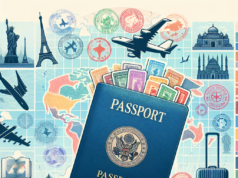
Canada has long been recognized as a beacon of hope for those fleeing persecution, war, and violence. The country’s Refugee Assistance Program is designed to provide essential support to individuals seeking asylum, yet the effectiveness and reliability of this program have come under scrutiny. As global displacement continues to rise, the question arises: Is Canada’s Refugee Assistance a lifeline for those in need, or is it a broken promise? This article delves into the objectives and structure of the program, its historical context, effectiveness, personal testimonials, critiques, and future recommendations.
Understanding Canada’s Refugee Assistance Program: An Overview of Its Objectives and Structure
Canada’s Refugee Assistance Program aims to provide protection and support to individuals who have fled their home countries due to persecution or violence. The program is structured around two primary components: the Government-Assisted Refugees (GAR) program and the Private Sponsorship of Refugees (PSR) program. GARs receive financial support and settlement assistance from the government for up to one year, while PSRs are sponsored by private individuals or groups who commit to providing financial and emotional support. The overarching objective is to facilitate the successful integration of refugees into Canadian society, ensuring they have access to essential services such as housing, healthcare, and education.
Historical Context: The Evolution of Refugee Policies in Canada Over the Decades
Canada’s approach to refugee assistance has evolved significantly since the post-World War II era. Initially, the country adopted a reactive stance, responding to crises as they arose. However, the 1976 Immigration Act marked a pivotal shift, establishing a formal refugee determination process and recognizing the need for a more structured approach to refugee resettlement. Over the decades, Canada has welcomed refugees from various conflicts, including those from Vietnam, the former Yugoslavia, and Syria. Each wave of refugees has prompted adjustments to policies and programs, reflecting the changing global landscape and Canada’s commitment to humanitarian principles.
Assessing the Effectiveness of Canada’s Refugee Assistance: Successes and Challenges
While Canada’s Refugee Assistance Program has been lauded for its humanitarian efforts, it faces significant challenges. Successes include the successful integration of many refugees into Canadian society, with numerous individuals contributing to the economy and enriching the cultural fabric of the nation. However, challenges persist, such as lengthy processing times, bureaucratic hurdles, and inadequate funding for settlement services. Critics argue that these issues can hinder refugees’ ability to rebuild their lives and fully participate in society, raising concerns about the program’s overall effectiveness.
Personal Stories: Testimonials from Refugees Benefiting from Canada’s Support System
Personal stories from refugees who have benefited from Canada’s support system highlight the program’s impact on individual lives. For instance, a Syrian refugee family shared their journey of fleeing war and finding safety in Canada. With the help of the GAR program, they received financial assistance and access to language training, which enabled them to secure employment and integrate into their new community. Such testimonials underscore the importance of the program in providing not just material support, but also hope and a sense of belonging for those who have endured unimaginable hardships.
Critiques and Controversies: Is Canada’s Refugee Assistance a Broken Promise?
Despite its successes, Canada’s Refugee Assistance Program has faced critiques and controversies that raise questions about its reliability. Critics argue that the program often falls short of its promises, citing issues such as insufficient funding, inconsistent support across provinces, and the challenges faced by private sponsors. Additionally, the increasing number of asylum seekers has strained resources, leading to delays in processing and support services. These concerns have prompted some to label the program as a “broken promise,” suggesting that Canada may not be living up to its reputation as a leader in refugee assistance.
Future Directions: Recommendations for Strengthening Canada’s Refugee Assistance Framework
To enhance the effectiveness of Canada’s Refugee Assistance Program, several recommendations have emerged from stakeholders and experts. First, increasing funding for settlement services is crucial to ensure that refugees receive the support they need to integrate successfully. Second, streamlining the application and processing procedures can help reduce wait times and alleviate the burden on both refugees and service providers. Finally, fostering collaboration between government agencies, non-profit organizations, and private sponsors can create a more cohesive support network, ultimately strengthening the framework for refugee assistance in Canada.
As Canada navigates the complexities of global displacement, the effectiveness of its Refugee Assistance Program remains a critical issue. While the program has undoubtedly provided a lifeline for many, ongoing challenges and critiques highlight the need for reform and enhancement. By addressing these concerns and implementing strategic recommendations, Canada can reaffirm its commitment to being a leader in refugee assistance, ensuring that it remains a place of hope and opportunity for those seeking safety and a new beginning.



























